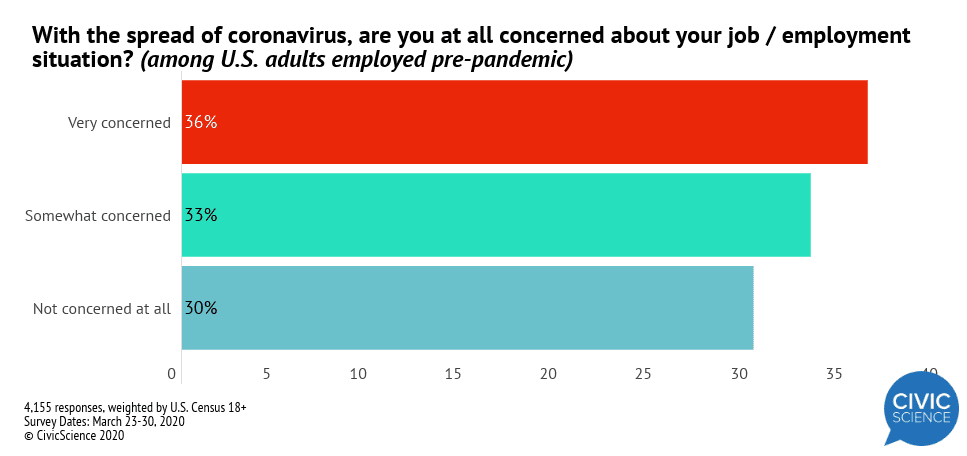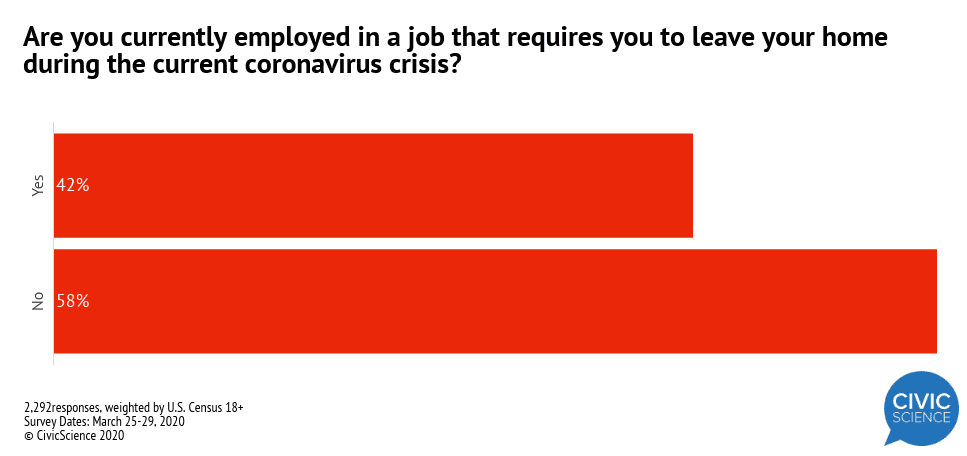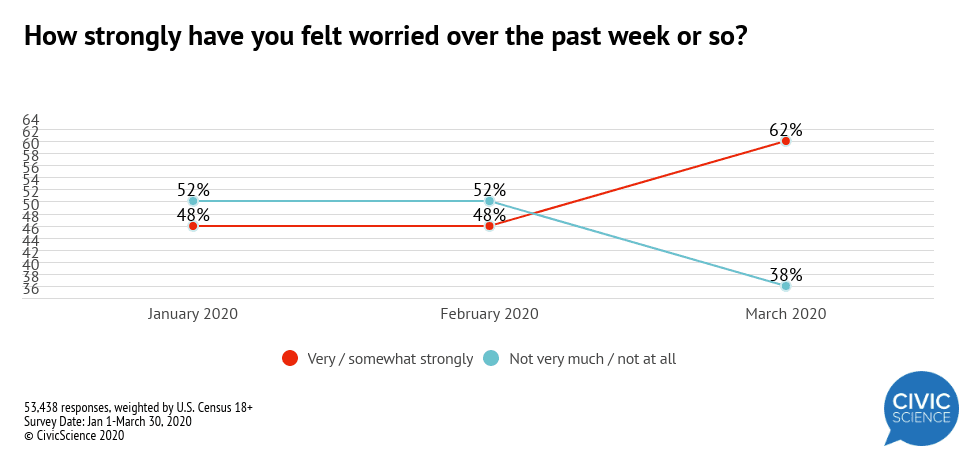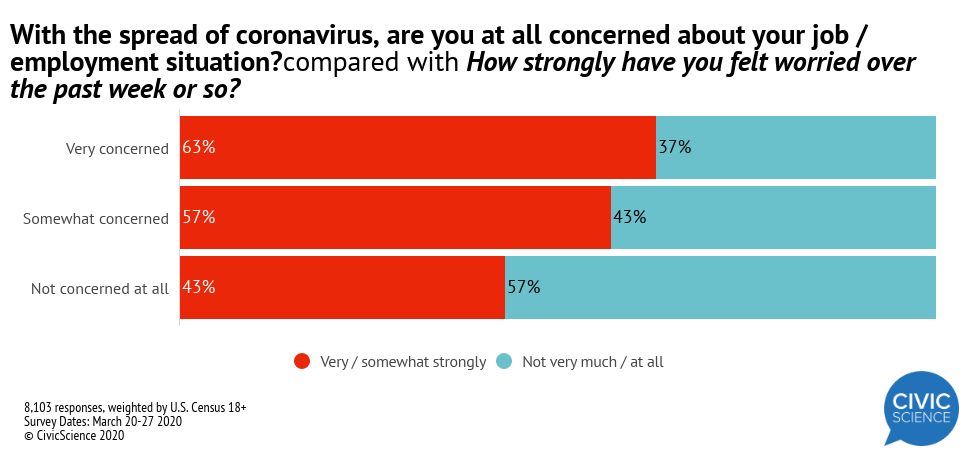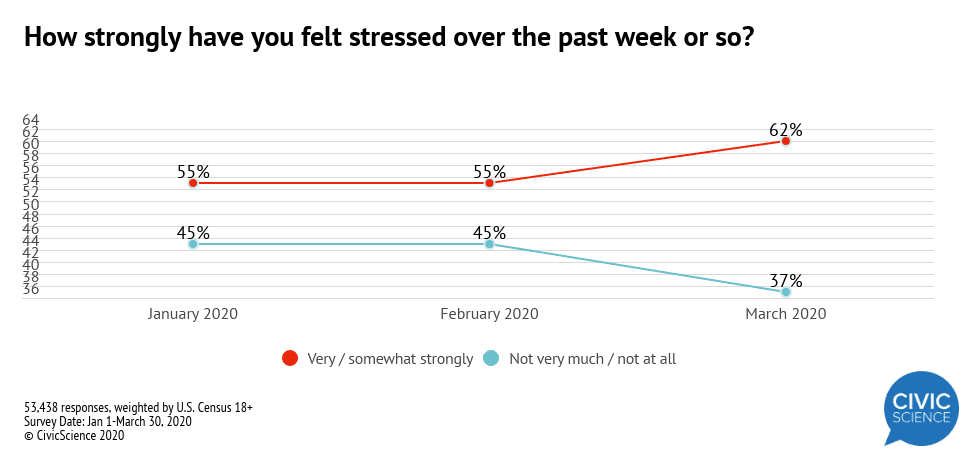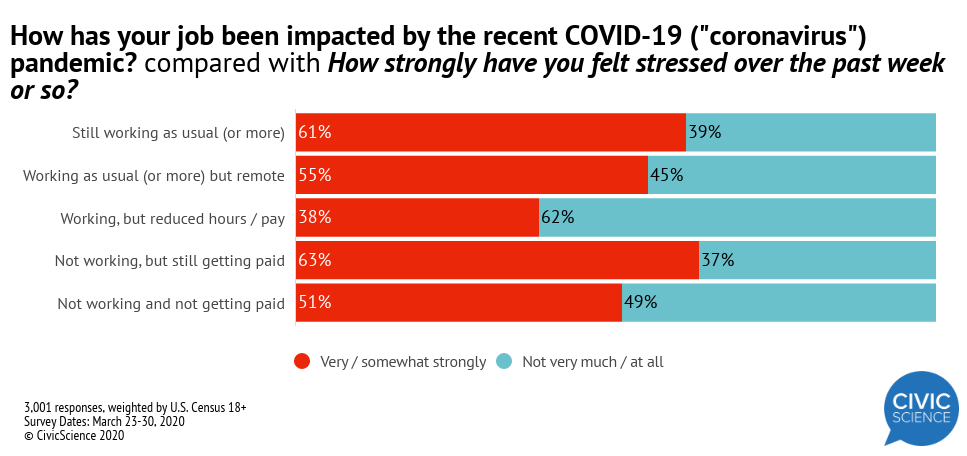With confirmed cases of the novel coronavirus increasing by the day, state governments across the country have heightened restrictions for movement and business. Many are now living under shelter-in-place orders, with non-essential businesses shuttered and strong recommendations to only leave the house when it is absolutely necessary.
These changes to normal daily activities have impacted not just where people work, but the state of their mental health as well. CivicScience surveyed thousands of U.S. adults employed pre- COVID-19 about their experience in the last week–on the job and in their mind.
Even with the increased restrictions for many, 43% of employed U.S. adults are still working as usual, or more. Twenty-four percent are working as usual or more, but remote.
As the data show, over two thirds (69%) of working U.S. adults have some level of concern over their employment situation, due to the spread of coronavirus. Concern is highest for professionals and those in the service industry.
Meanwhile, 42% of U.S. adults at large are employed in a job that requires them to leave their home during the pandemic.
With so many shifts and potential changes for many individuals’ employment situations, it is important to understand the impact on mental health.
Worry on the Rise
Since February, U.S. adults at large have experienced a striking increase in worry. In the last month, worry has risen from 48% to 62%. And, as it turns out, worry is nearly just as high amongst those who are working as usual or more, but remotely as those working as usual or more but not remote. But we’re seeing the highest level of worry among those who are not working but still getting paid.
Those who are most concerned about their employment situation as a result of the current crisis have also experienced the most worry in the last week. And given the sharp increase in worry over the past month, it is likely that this feeling is not going away any time soon.
Staying In, Stressing Out
Stress is also taking a major toll on U.S. adults, with the number of individuals experiencing this emotion rising sharply in the past month.
In February, 55% of U.S. adults had felt some level of stress during the average recent week. That percentage has risen to 62% in just one month’s time.
We observe the highest stress levels in the past week from those who are still getting some sort of compensation, but not currently working. Those who are still working as usual (or more) and those who are working the same or more than usual, but remotely, respectively, are high up on the stress meter as well. While working from home is the ideal for some, it does create a change in routine–especially under the current circumstances–and an adjustment period that could be further increasing stress levels, amidst the daily developments of this health crisis. Perhaps the most stressful part of this situation is breaking routine, and not knowing what’s next.
Naturally, stress is a major factor for those who are also concerned about their employment situation. That said, just over half of U.S. adults who are not concerned about the stability of their job are also feeling stress. This suggests that while the potential for losing a job clearly heightens stress levels, overall stress is especially high, as this pandemic continues to spread.
It is also worth noting that stress is highest right now amongst U.S. adults aged 18-34, as well as those who are neither parents nor grandparents. While popular opinion suggests that younger adults are less willing to be inconvenienced by shelter in place guidelines, the data challenges this notion, revealing that this group could in fact be one of the most vulnerable to stress during this tumultuous time, given they are a large part of the U.S. workforce.
As it stands, those working as usual or more (remote or not) and those concerned about the consistency of their employment are navigating the highest levels of worry and stress. The study observes that staying indoors may cause more feelings of isolation, stress, and worry than those who get to stick to their routines, even amid the pandemic. With this combination of emotions dominating the current state of mental health, it is easy to feel as though the end is nowhere in sight. Add to this the fact that levels of excitement and happiness have fallen dramatically in the last month, and it becomes even more clear that the emotional toll of this pandemic is being felt across the board.

